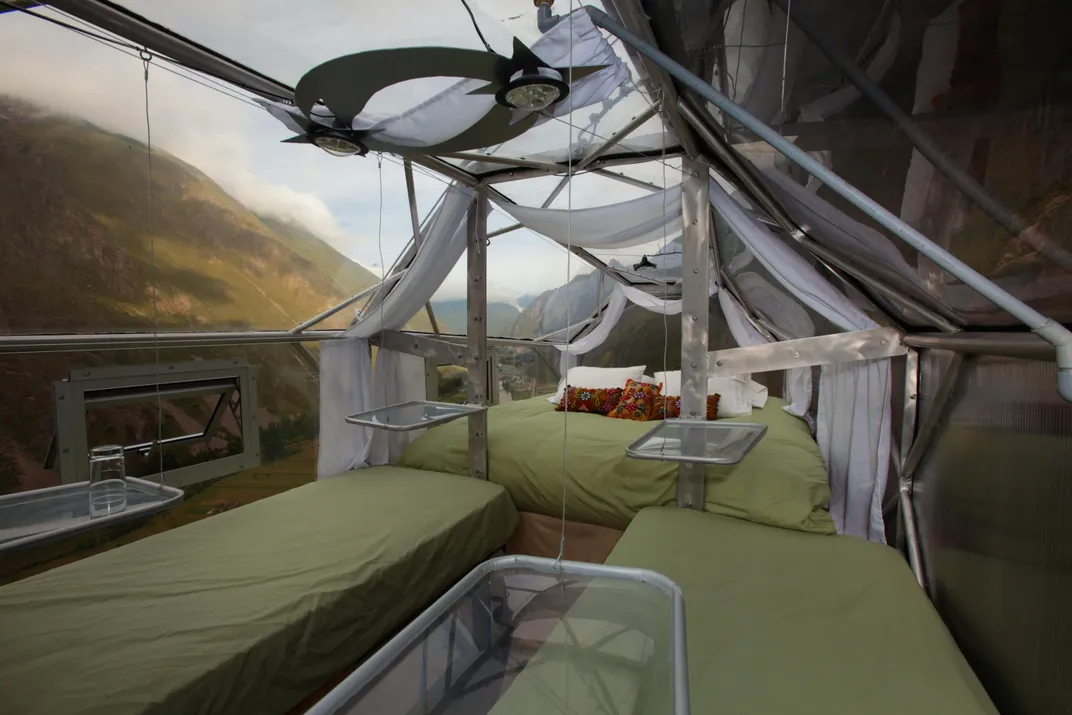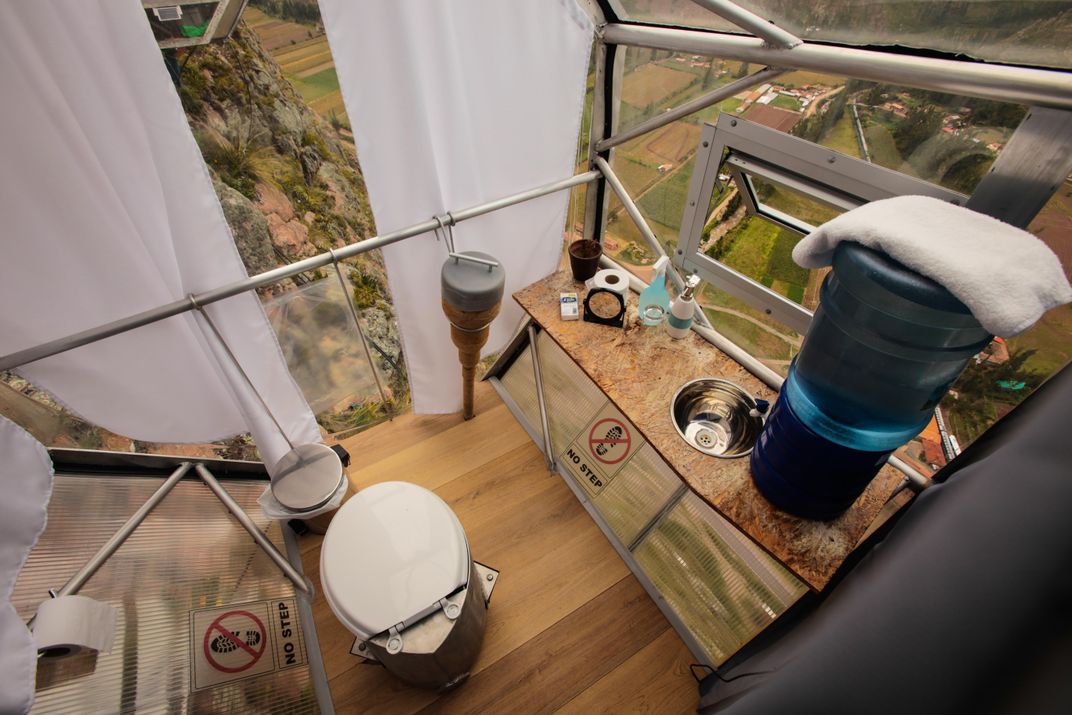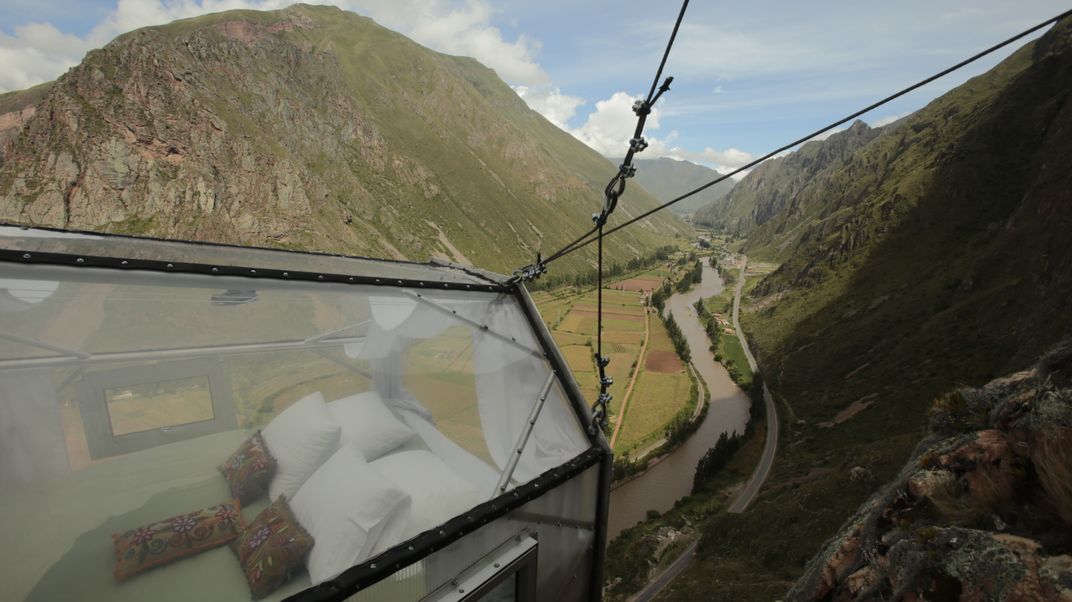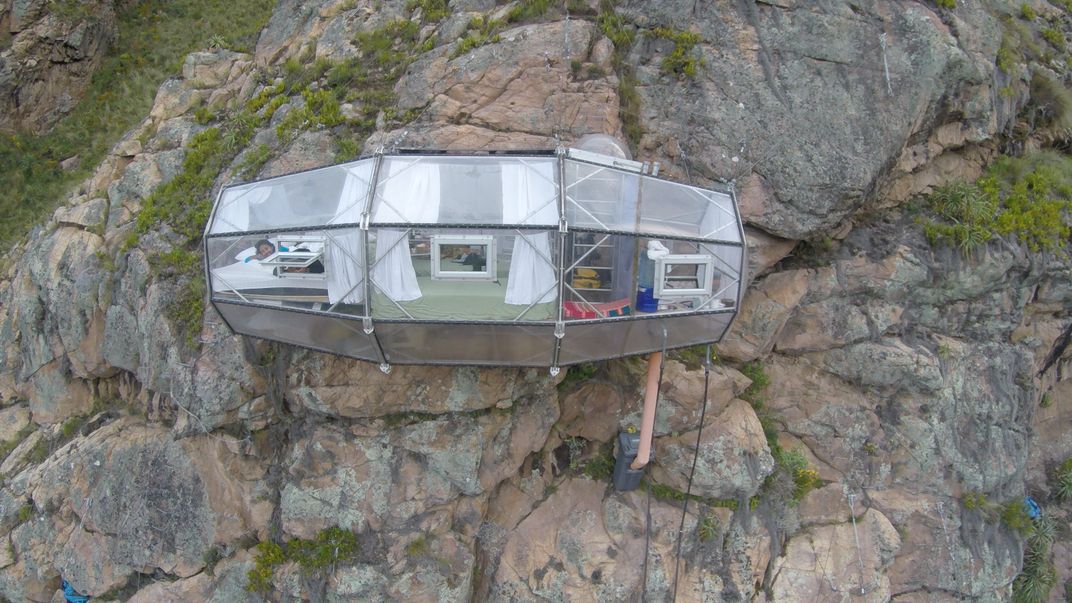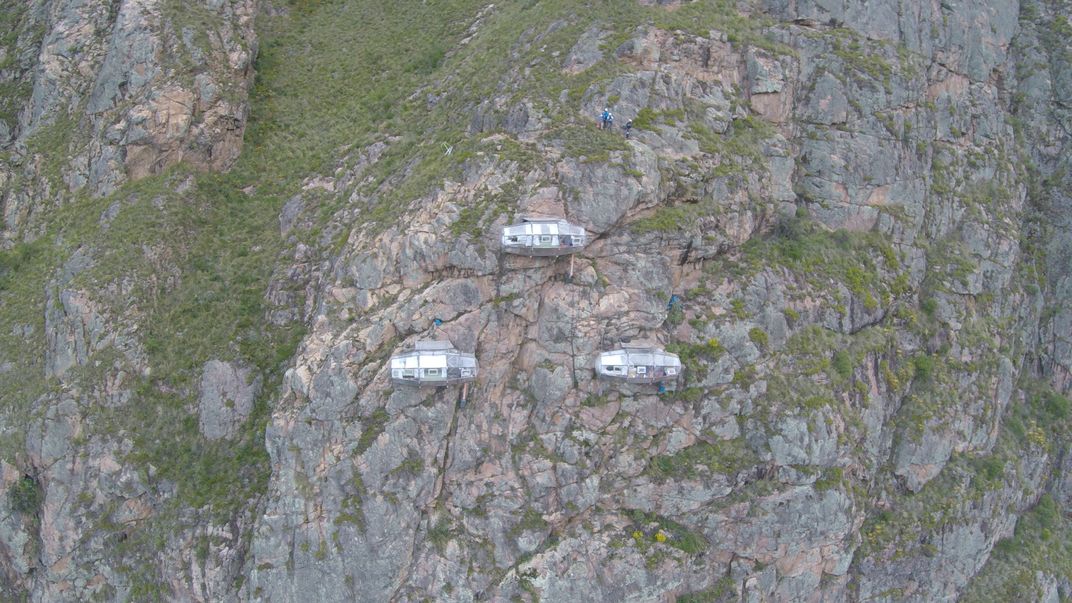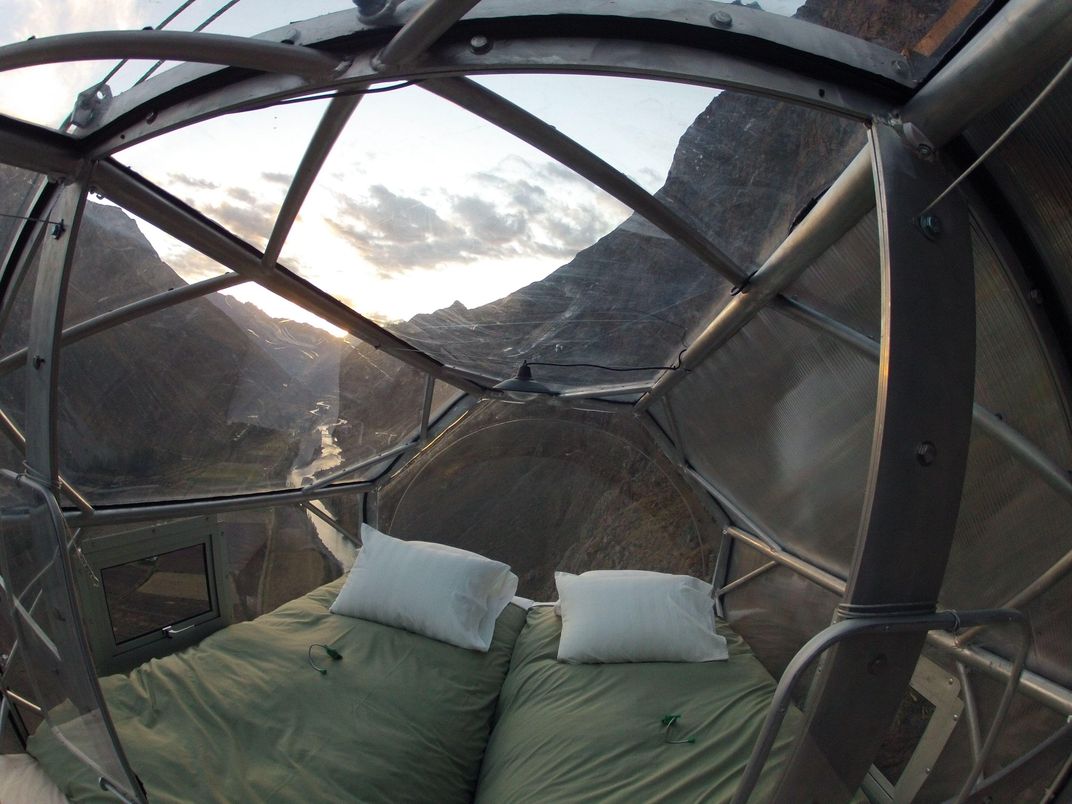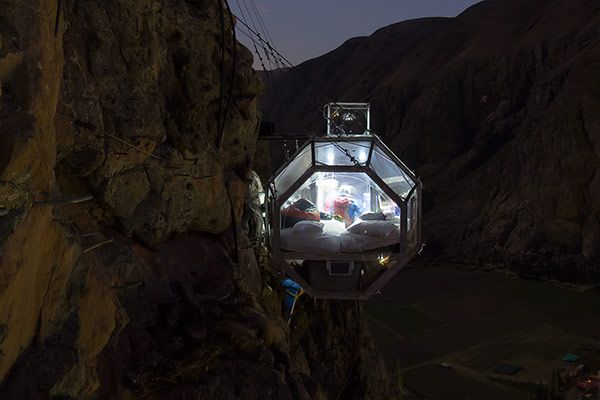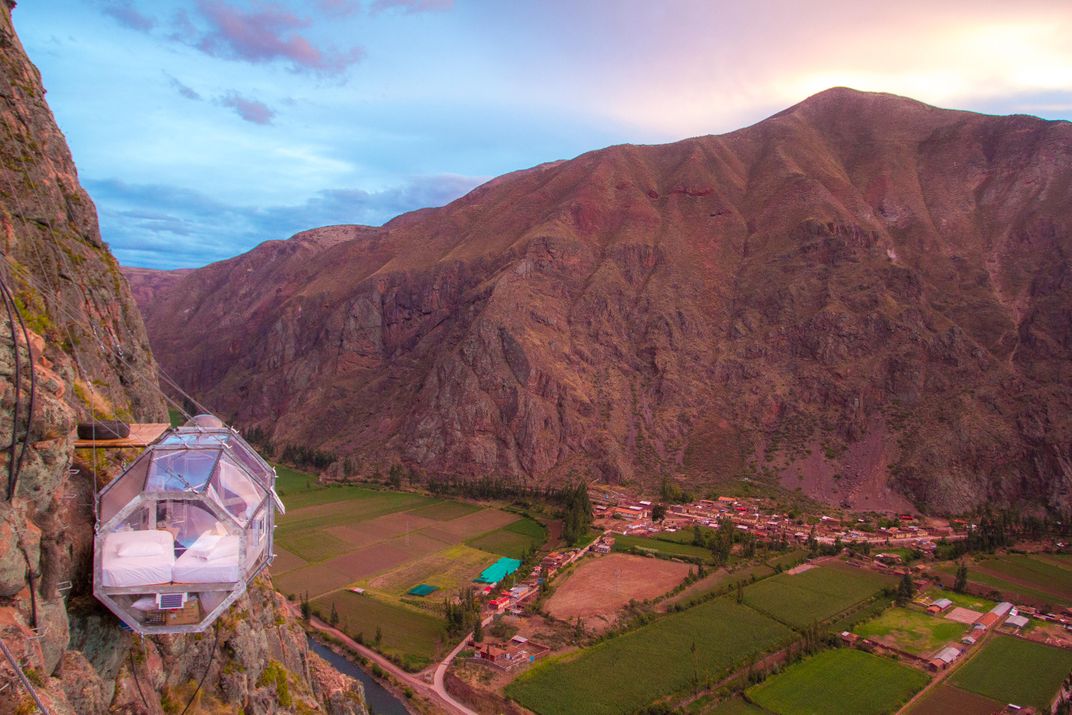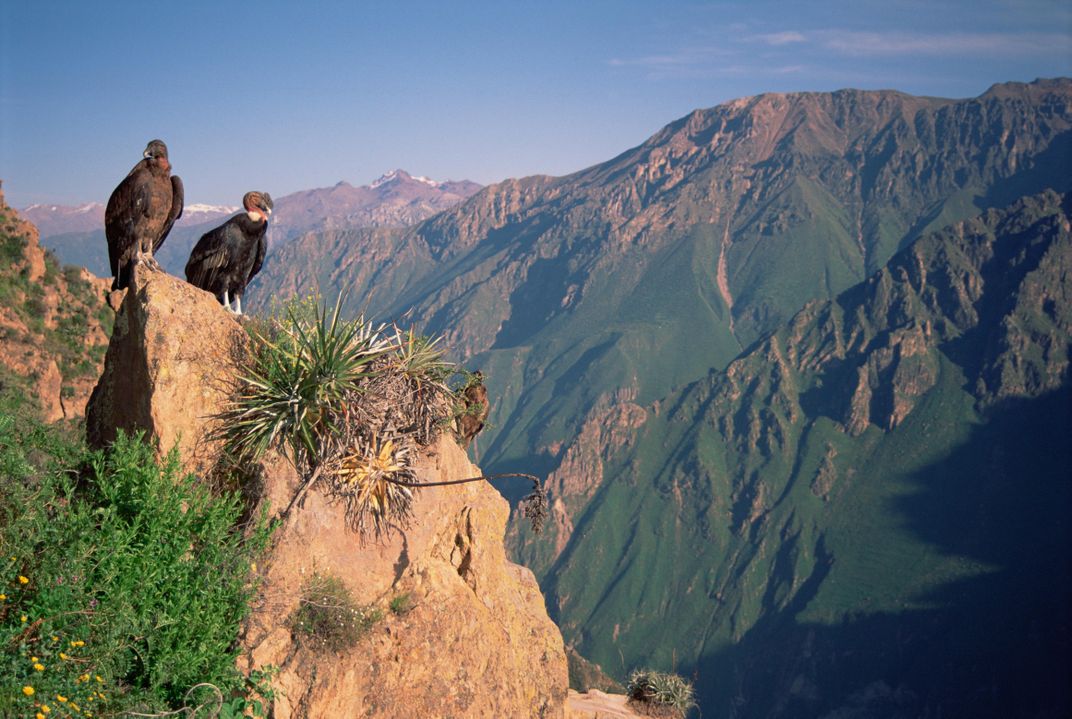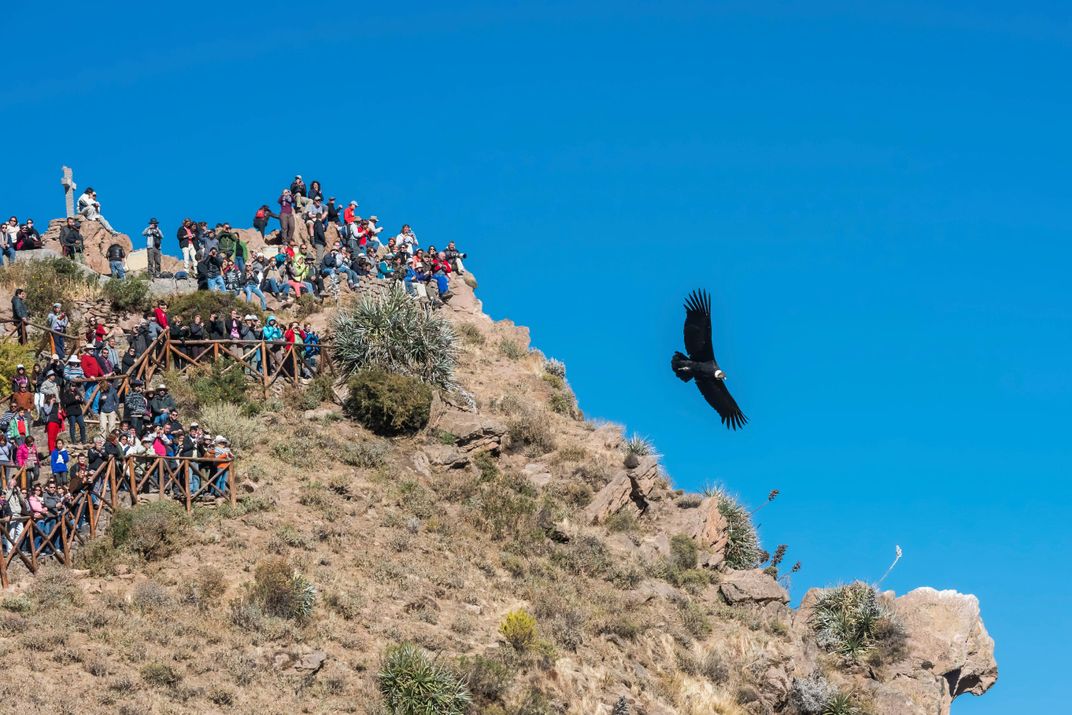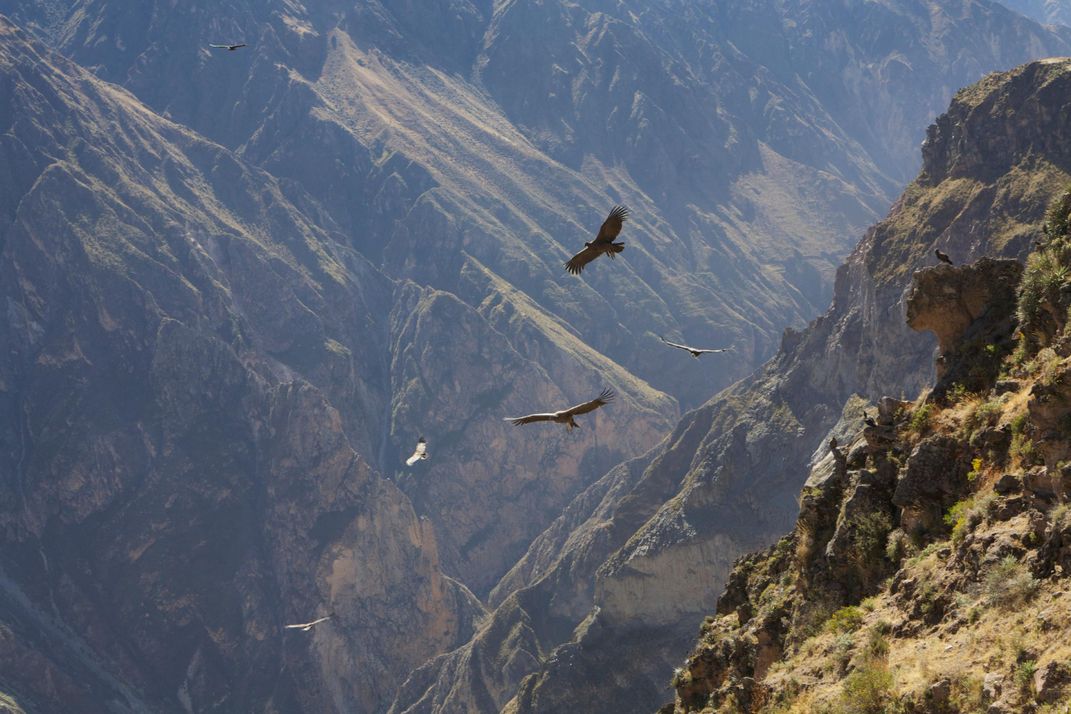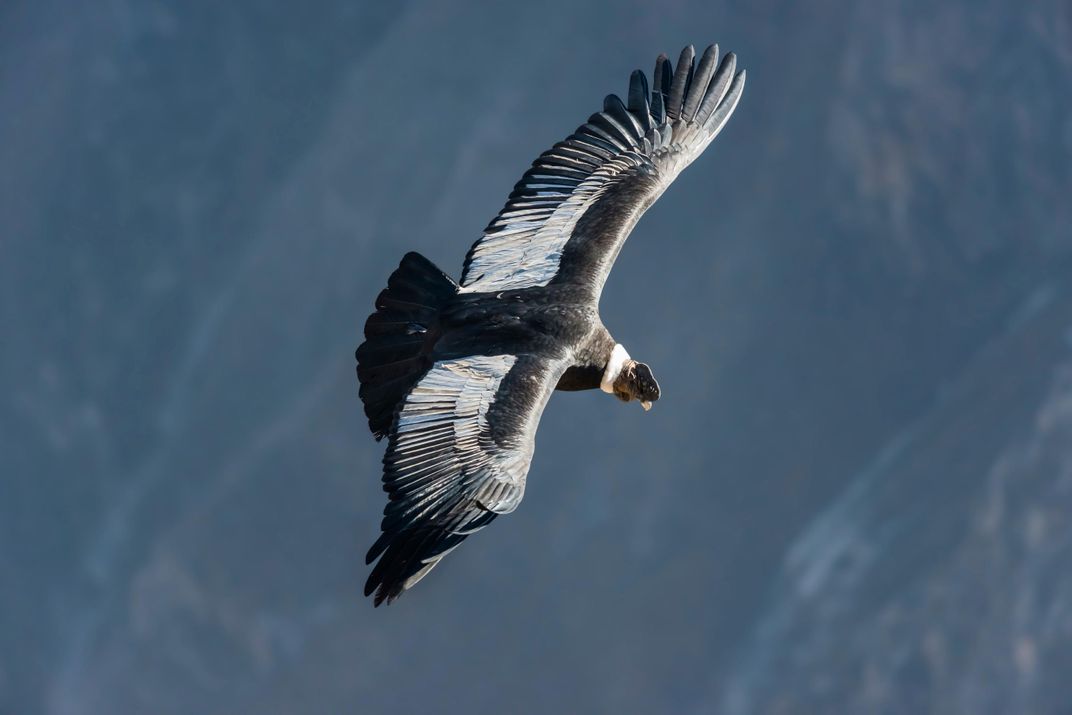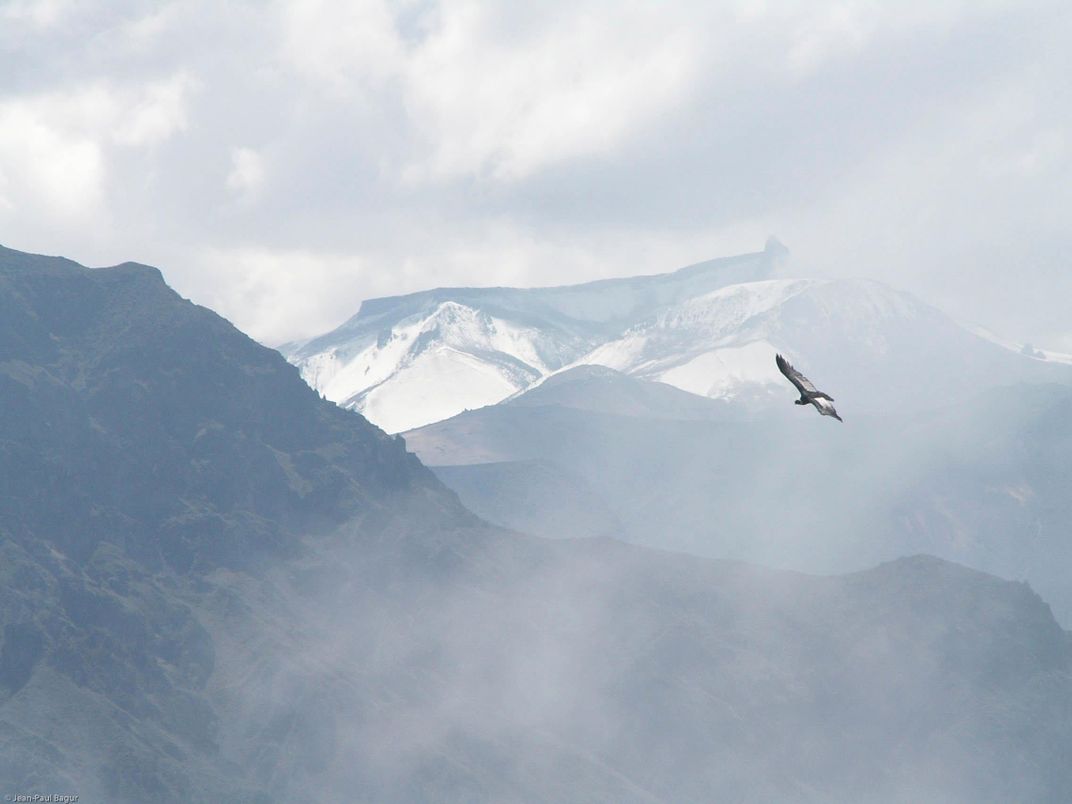Sleep With the Condors at This Peruvian Hotel Hanging Off a Cliff
The cliffside Skylodge hotel dangles 1,300 feet above the ground
There are few sights more majestic than watching the endangered Andean condor soar over Peru’s Sacred Valley along the Inca Road in southern Peru. And there's a hotel that allows guests to do just that, while hanging off the side of a cliff 1,300 feet above the valley floor.
Natura Vive’s Skylodge Adventure Suites, located near the city of Cuzco, is a hotel dangling above the Sacred Valley and the Urubamba River. In total, there’s room for up to eight people in the hotel's three capsules: Two of the capsules are divided into modules that contain sleeping arrangements for four, a dry toilet bathroom and a wooden folding table for meals. The third capsule is the service capsule, where guides prepare breakfast and dinner for the guests.
While experienced mountain climbers often employ suspended cots known as portaledges on multiple-day climbs, the Skylodge is meant for those who may not be as experienced. “I wanted to give the chance to those who weren’t experienced climbers to feel what we feel,” says Arios Ferri, owner and operating manager of Skylodge, who has also been a rescue instructor since 2003.
The entire structure is constructed of super-light aerospace aluminum and illuminated inside by solar panel lights. A shiny metal alloy means the hotel doesn’t have to be re-painted each year, “which would be kinda difficult anyway,” notes Ferri. Each capsule is covered in floor-to-ceiling, weather-resistant transparent panels (with optional privacy curtains), providing breathtaking views of the valley below and the sky above, even from the bathroom. “The toilet has the best view, even though people usually close the curtains,” Ferri laughs.
While fear of heights may scare some people off, the Skylodge experience is actually geared toward inexperienced climbers. Ferri says, “99.9 percent of our clientele have never, ever done something like this before.” The cliff’s via ferrata—a Italian system of easy-to-maneuver ladders, bridges and cables attached to the cliff—allows those who are in reasonable physical shape to descend (and ascend) safely while still enjoying fantastic views. It also provides access between each capsule in case one wants to give a quick hello to fellow travelers. For those feeling a bit more adventurous, a rather rigorous rock-climbing route can be taken to the Skylodge, and there are hiking and ziplining options for access as well.
The beautiful Andean condor also has a habit of flying around the hotel. According to Ferri, a family of condors nests above the Skylodge, and can be seen nearby for two to three months a year, starting in July. However, Ferri’s first interaction with them was almost his last. “We were climbing … and two condors were looking down in the valley. We didn’t notice them and I don’t think they noticed us. They almost crashed into us … they were within [four feet] of our bellies,” he says. Now, the condors fly around the Skylodge and often peer in, giving visitors a fantastic, up-close view of this rare bird.
This Skylodge experience isn’t cheap ($340 per person per night), but the price includes accommodations, access to the via ferrata, ziplining, transportation to and from Cuzco (via a Mercedes-Benz bus), breakfast, dinner and a bottle of wine. It’s basically glamping, but with a valley and a river 1,300 feet below.
Planning Your Next Trip?
Explore great travel deals
Smithsonian magazine participates in affiliate link advertising programs. If you purchase an item through these links, we receive a commission.
